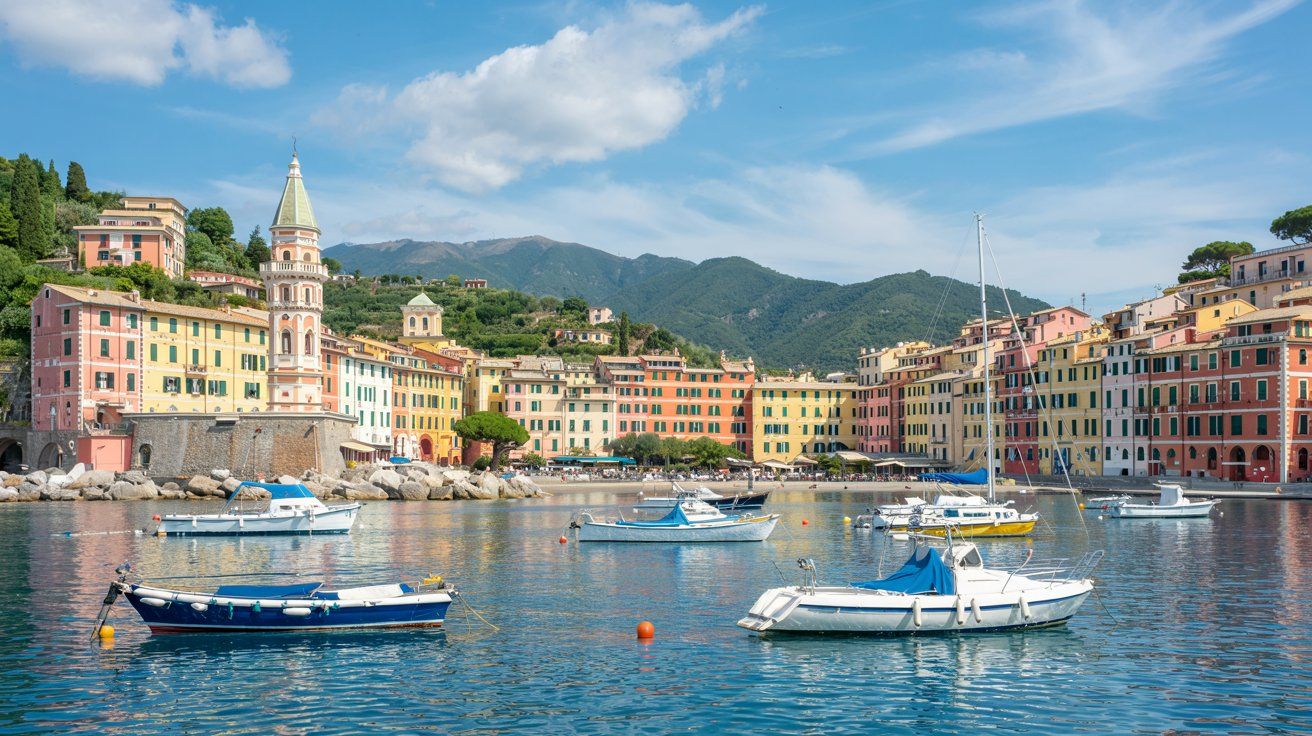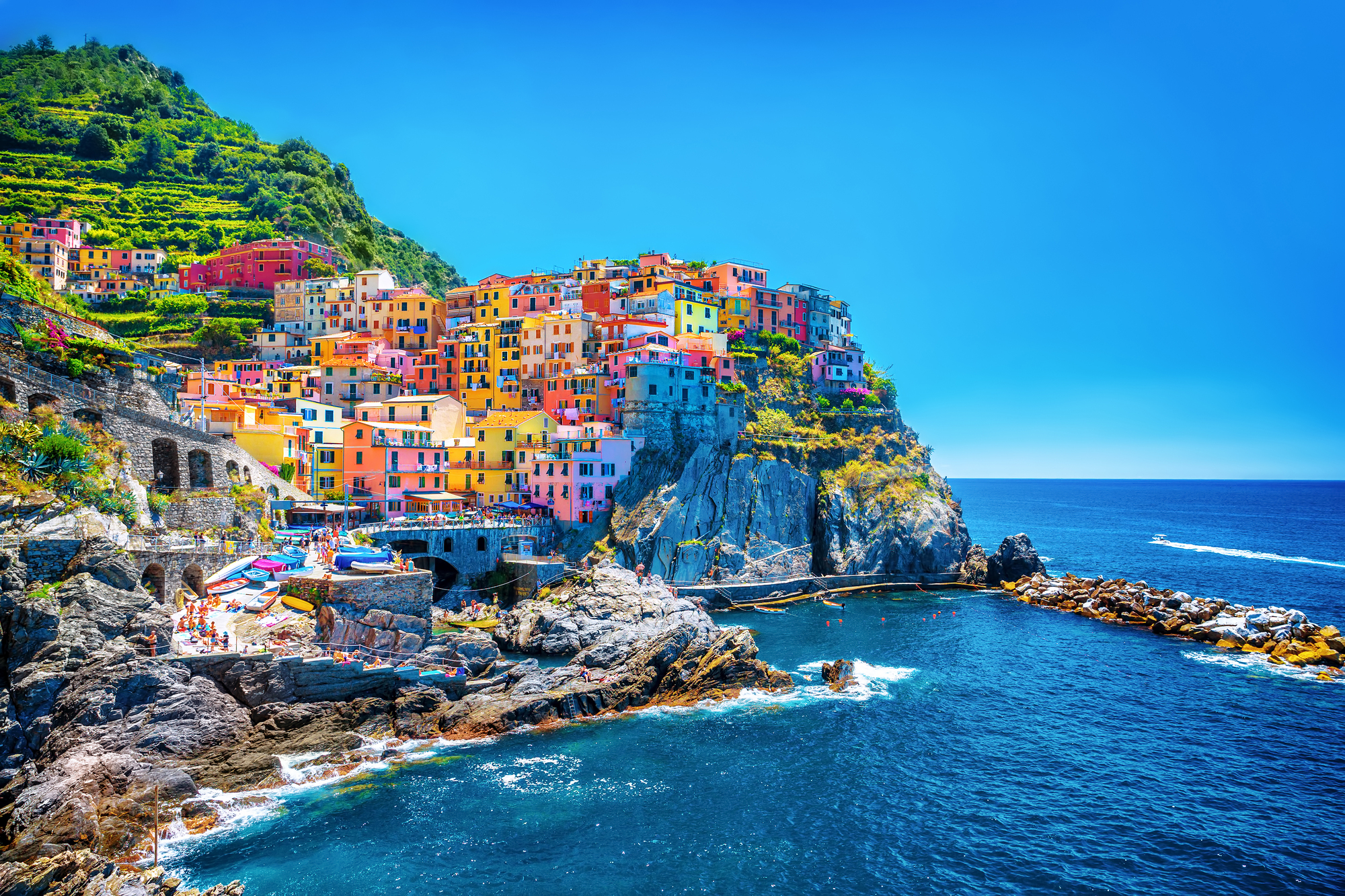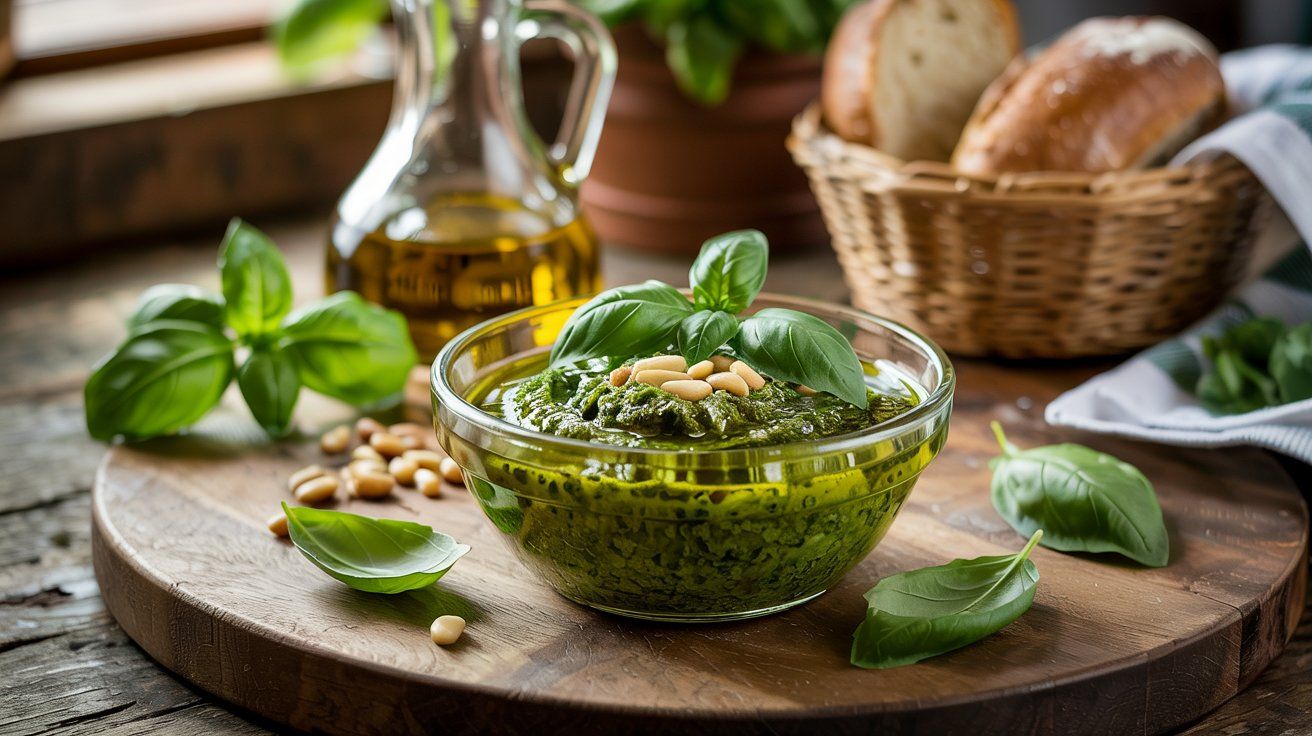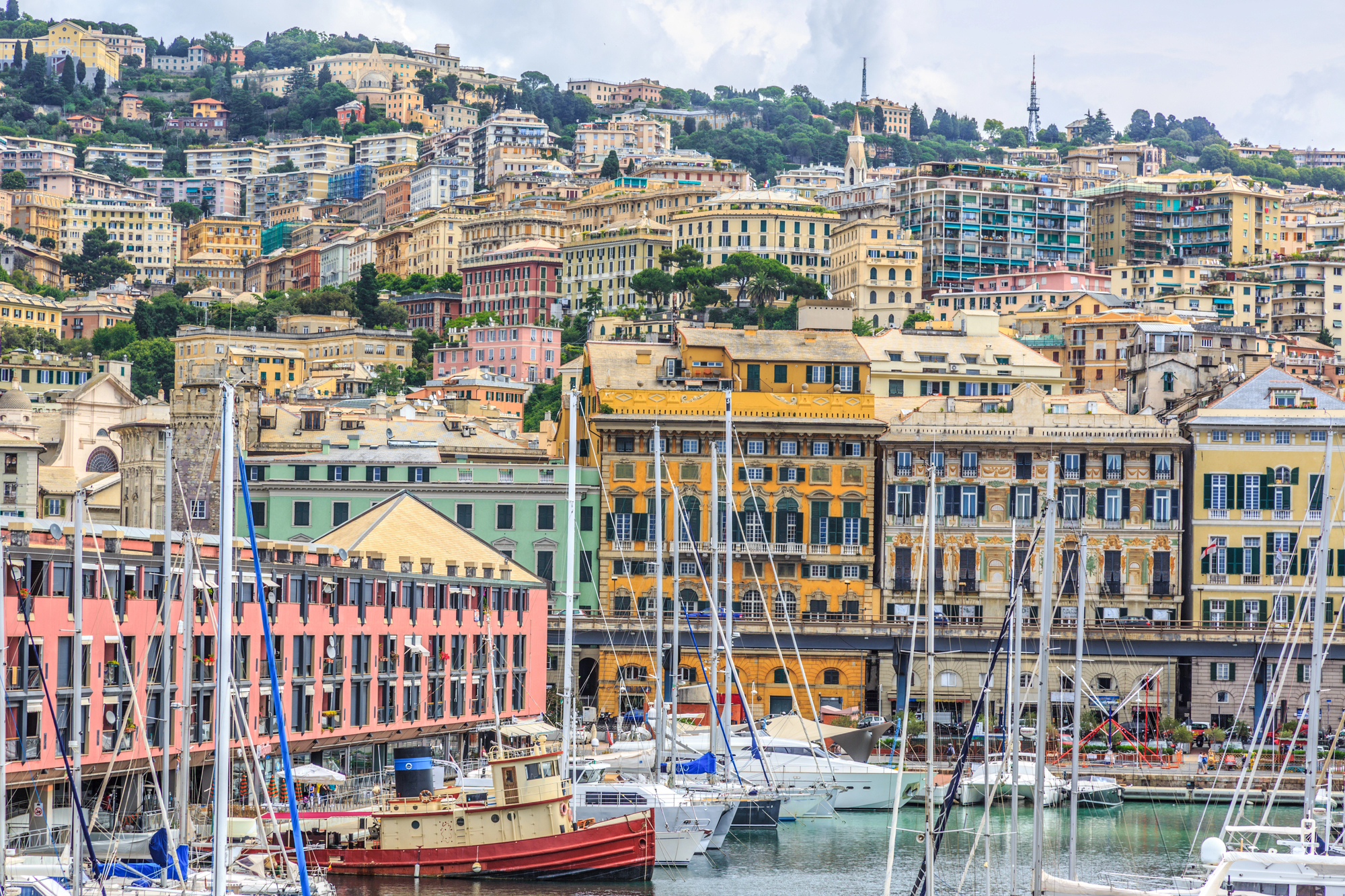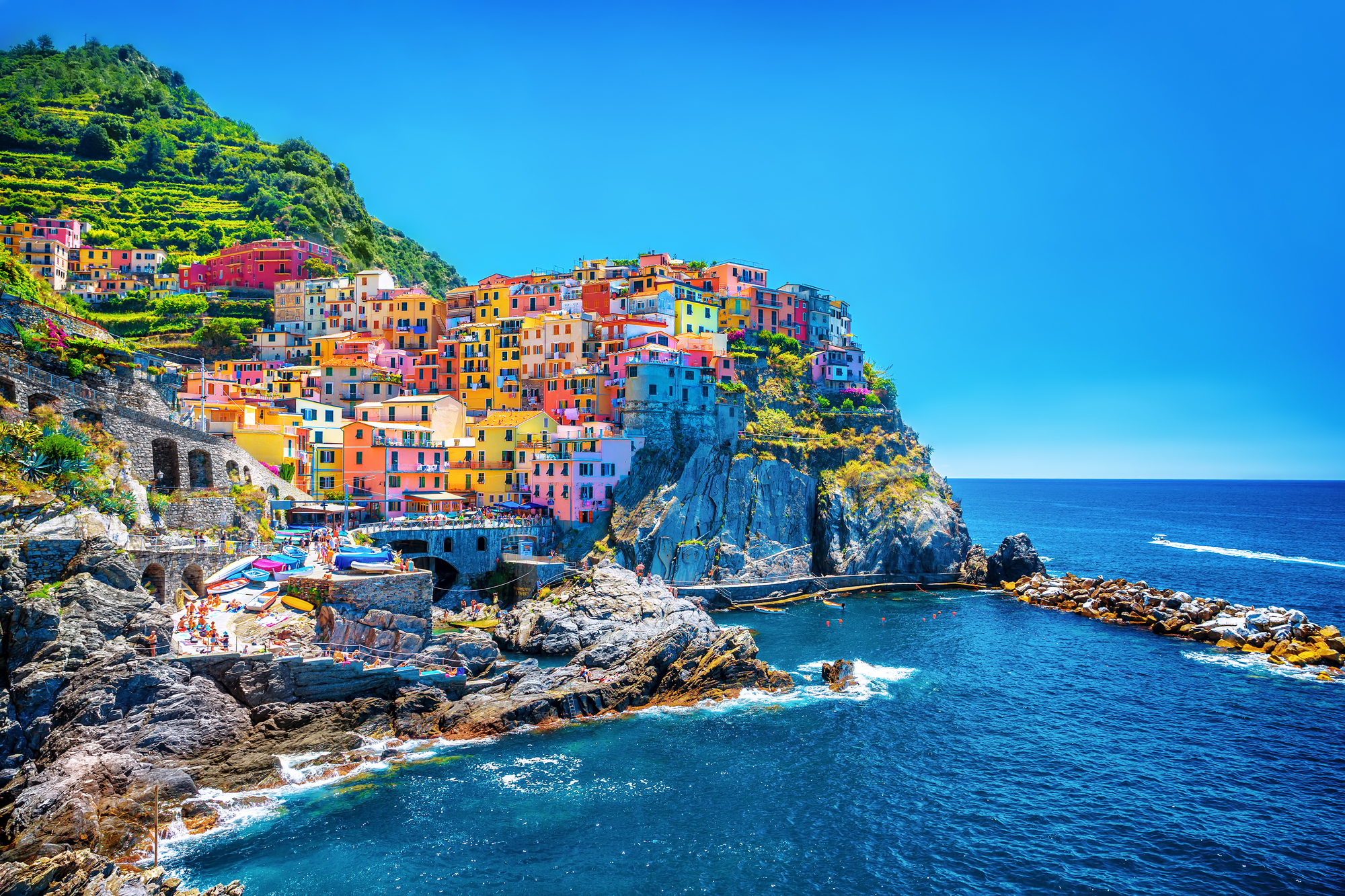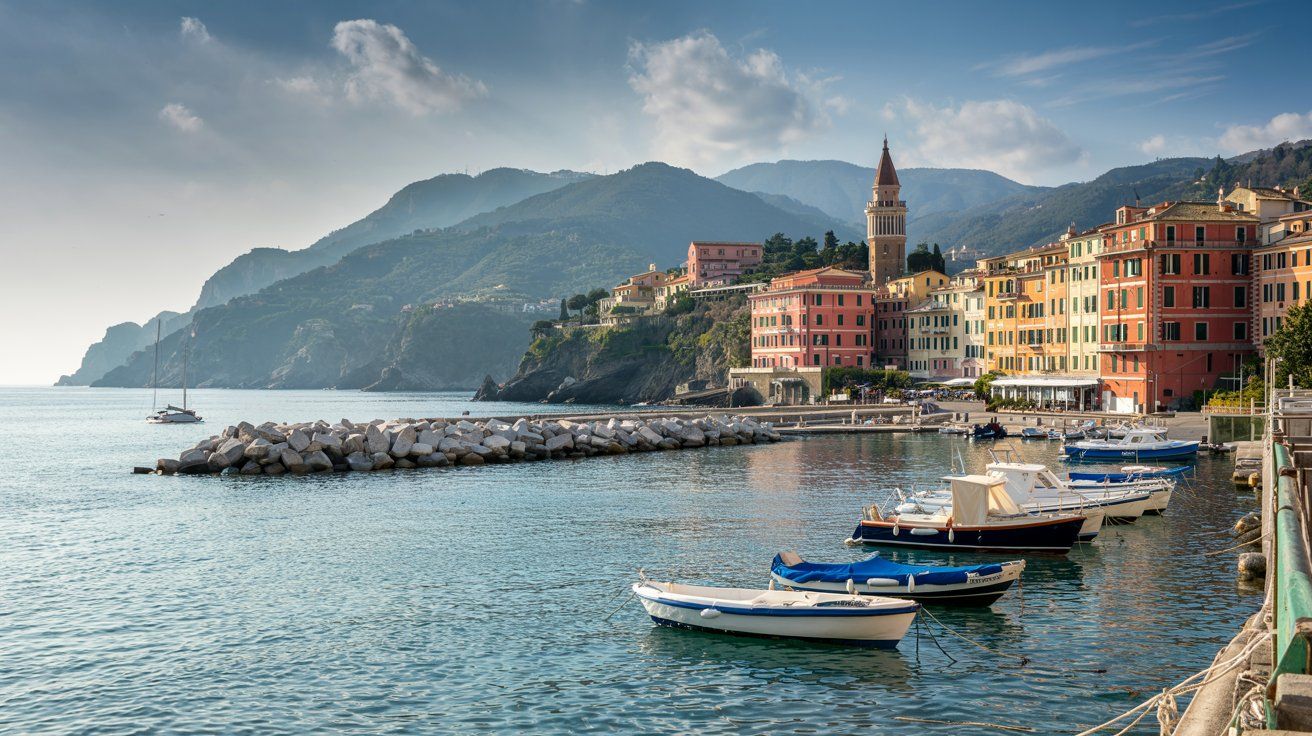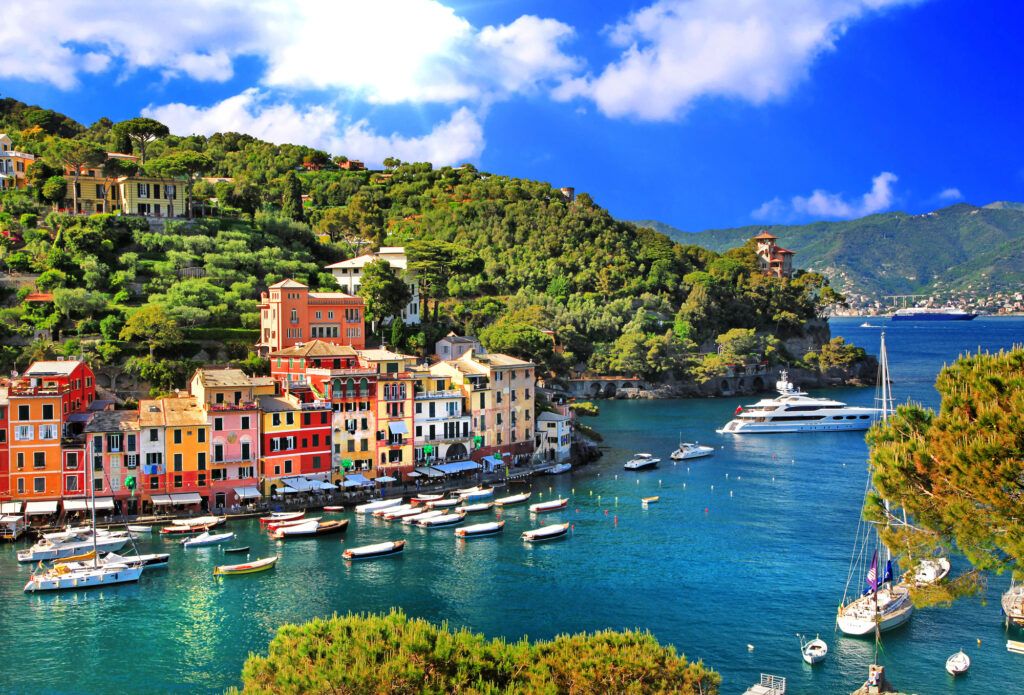You step onto the Italian Riviera just as autumn really takes hold. The coast eases into a slower pace, sunlight gets softer, and the Ligurian Sea looks a little moodier. Locals settle back into their routines, cafés feel more inviting, and the harbors and trails seem to welcome you in, no rush. November’s honestly a fantastic time here—outdoor adventures, coastal culture, and food that just feels right for the season.
You’ll find yourself walking old paths, sampling dishes tied to tradition, and stumbling into quieter corners that summer crowds completely miss. Every experience pulls you a bit closer to the Riviera’s everyday rhythm, from fishing villages to terraced hills. Here’s a guide with ten ways to make the most of your week, November 9 to 15, 2025—practical tips included, but nothing too rigid.
Find available hotels and vacation homes instantly. No fees, best rates guaranteed!
Check Availability Now
1) Hike the Cinque Terre trails
The Cinque Terre National Park is best explored on foot, wandering the web of coastal and hillside trails that link the five villages: Riomaggiore, Manarola, Corniglia, Vernazza, and Monterosso al Mare. Vineyards, olive groves, and little harbors shape your walk, giving you a real taste of Ligurian life.
The Blue Trail is the classic route, connecting all five towns. Sections like Via dell’Amore and Manarola–Corniglia have finally reopened, but it’s smart to check the park’s site before heading out—weather or repairs can close things quickly.
If you’re after solitude, the higher hillside trails in Italian Fix’s hiking guide are steeper but usually empty, with wide Mediterranean views. Bring sturdy shoes, water, and a few euros for trail access. Starting early means cooler temps and fewer people. Even a short walk between two towns tells you a lot about the land and local life.
2) Explore Portofino village
A quick bus or ferry from Santa Margherita Ligure drops you in Portofino, where the harbor sits tucked in a cove of pastel houses and bobbing boats. Mornings are especially peaceful—locals open up, shopkeepers set out displays, and you can actually hear the water.
Stroll around Piazza Martiri dell’Olivetta, then take the path toward the lighthouse. It winds past the Church of San Giorgio and gives you steady bay views. It’s not a tough climb, but the path’s uneven, so comfy shoes are a must.
Shops lean into local crafts, linen, and Ligurian ceramics. Prices can be steep, but window-shopping is half the fun. Many boutiques shut down midday, so check hours if you’re hoping to browse.
Down by the marina, restaurants serve up simple seafood and focaccia slicked with olive oil. For more ideas, this guide to Portofino has you covered.
If you want that rare quiet, come in the evening after the crowds leave. The lights shimmer on the water, and all you hear is the gentle creak of boats.
3) Visit San Fruttuoso Abbey
San Fruttuoso Abbey is only reachable by boat or foot, which keeps things peaceful—even during busier months. Tucked between Camogli and Portofino, the abbey sits surrounded by wooded hills and clear water. It feels like a step back in time.
Built in the 10th century, the abbey once hosted Benedictine monks. You’ll wander stone corridors, spot old tombs, and check out a small museum about its restoration. The Abbazia di San Fruttuoso is still cared for by the Italian heritage trust FAI, so the Romanesque look remains intact.
Boats leave from Camogli, Portofino, and Santa Margherita Ligure several times daily. If hiking’s more your thing, the trail through Portofino Natural Park is scenic but a bit of a workout—good shoes and some fitness help. Here’s a thorough guide to both options.
There aren’t many facilities. A couple of cafés serve basic seafood, and you can swim off the pebble beach. Half a day here is usually enough to soak up the quiet and see the abbey before heading back.
4) Stroll through colorful Vernazza
Vernazza, one of the Cinque Terre’s most photographed harbors, is easy to reach by train or trail. The tiny port opens up to pastel houses and fishing boats, with stone steps right down to the sea. Even in November, it’s lively but not overwhelming.
Walk Via Roma from the station to the harbor. It’s lined with cafés, gelato shops, and crafts, so you get a peek into daily life. Tripadvisor’s list says this short stretch sums up Vernazza’s charm.
You can hike up to Doria Castle for a quiet view over the bay. The climb’s a bit steep, but the lookout is worth it. Solosophie’s guide has more on what to expect.
Wrap up at Piazza Guglielmo Marconi by the marina. Locals gather here for an evening drink or seafood dinner—cinqueterre.eu.com has the details. It’s a chill spot to end your visit before catching a train.
5) Taste local Ligurian pesto
Liguria and pesto go hand in hand. The sauce was born in Genoa and is still at the heart of local cooking. Many cooks here stick with mortar and pestle, blending basil, pine nuts, Parmigiano Reggiano, and olive oil into something incredible.
You can join a quick class in Manarola or Genoa to pick up the traditional method. Some tours, like these top food and drink experiences, throw in focaccia and local wine tastings. You’ll notice how much texture and freshness matter in real pesto.
Places like Sà Pesta in Genoa serve Pasta alla Genovese—just pasta, potatoes, and pesto, super classic. Journey Magazine calls it a must-try.
Every town does it a little differently. Some chefs go heavy on the cheese, others keep it lighter and more herbal. Sampling pesto in a few places is the only way to figure out what you like best.
6) Relax on Monterosso al Mare beach
Monterosso al Mare, at the north end of Cinque Terre, stands out for its sandy beach—rare in this rocky region. You get two main spots: Fegina Beach and a smaller strip by the old town.
Fegina’s soft sand and calm water make it perfect for a swim or just lounging. Umbrellas and loungers are easy to rent, and the promenade is dotted with cafés and gelato. The train station’s just behind, so there’s no uphill slog.
Elegant resorts, charming apartments, and vacation rentals with immediate confirmation. From Portofino to Cinque Terre, discover the most beautiful coastal towns of Liguria!
See Available Properties
For a quieter vibe, check out the old town beach near the harbor. You’ll see fishing boats and fewer people. The pastel houses against the cliffs are exactly what Tripadvisor’s Monterosso guide describes.
Even in November, a walk on the sand or a coffee at a seaside café feels right. The pace slows, the air’s crisp, and you catch a more genuine side of the village.
7) Discover historic Sanremo
Sanremo, a coastal city famous for mild weather and grand architecture, has an old quarter called La Pigna. Its winding lanes reveal medieval arches and quiet corners. Walking here, you see how the town grew from a fortified hilltop to a modern resort.
Start at Porta di Santo Stefano, a 14th‑century gateway into La Pigna’s maze of stone alleys. Visit Italy’s local guide points out the hidden gardens and sea views. Wear good shoes—the streets can be steep and a bit rough.
Down by the water, the vibe shifts. The Sanremo Casino and palm-lined promenade recall the city’s Belle Époque heyday. Cafés serve up Ligurian classics, and locals stroll Corso Imperatrice in the evenings.
If you’re after some quiet, check out the Russian Orthodox Church or the gardens near Villa Nobel, where Alfred Nobel once lived. Sanremo mixes history with daily life, making it easy to explore without feeling rushed.
8) Boat tour along the coastline
The best way to see the Italian Riviera might honestly be from the water. A boat tour shows off the cliffs, pastel towns, and terraced hills in a way you just can’t get from land. November seas are usually calm, but the breeze can be chilly—bring a jacket.
Popular routes run between Portofino, Cinque Terre, and the Gulf of Poets. Companies like EuroAquaTours and Tripadvisor’s cruise picks offer group and private options. Stops in quiet coves or harbors like Vernazza and Manarola let you hop off for a bit.
Most tours go at a relaxed pace—no speedboats here. Some include snacks and prosecco, others just focus on the sights. Cloudy day? You might skip swimming, but the coastal views are still worth it.
Booking ahead is smart, especially on weekends. Even off-season, these tours fill up with folks who want an easy, scenic way to see the Riviera.
9) Sample fresh seafood in Camogli
Camogli, a fishing village that still feels real, serves up some of the Riviera’s freshest seafood. Locals bring in daily catches—anchovies, swordfish, squid—and restaurants keep things simple and traditional. The calm harbor makes meals here feel unrushed.
Walk the seafront and you’ll spot family-run trattorias offering grilled fish and pasta with clams. For recommendations, check the best seafood restaurants in Camogli. Prices vary, but even the humbler spots serve quality food thanks to the steady local catch.
If you want a quieter table, come outside peak lunch hours. Some people pop into bakeries for focaccia before or after dinner, something the Camogli Travel Guide mentions as a local habit.
You won’t find fancy plating or luxury service, but you will get honest, well-cooked seafood. It’s more about the town’s fishing roots than catering to tourists.
10) Visit the medieval town of Dolceacqua
Dolceacqua sits tucked away in the hills of Val Nervia, just a quick 15-minute drive from Ventimiglia. The town’s Ponte Vecchio, a stone bridge, arches over the Nervia River and leads you right into a tangle of medieval lanes. It’s compact enough to wander on foot, with plenty of quiet nooks and glimpses of daily life.
If you’re up for a bit of a climb, head to the Castello dei Doria. The walk’s short but a bit steep, so comfy shoes are a good idea. Inside, you’ll find straightforward exhibits about the region’s history and the Doria family’s mark on the area.
Grab a seat at a wine bar and order a glass of Rossese di Dolceacqua, the local red that comes from the surrounding terraces. It pairs well with a simple plate of olive oil or some focaccia—honestly, it’s an easy lunch. For more on what to see and do, check this guide to things to do in Dolceacqua.
Easy booking across stunning accommodations from historic hotels to modern retreats. Pastel-colored buildings and crystal waters create the perfect Mediterranean escape!
Secure Your Italian Getaway
Weekday mornings are especially peaceful. Locals go about their routines, shopping or chatting by the bridge. Dolceacqua’s size and unhurried pace make it a solid half-day stop before heading back to the coast.
Travel Tips for the Italian Riviera in November
November brings a quieter mood to the Riviera: mild days, fewer crowds, and a slower rhythm shaped by local traditions. The evenings cool off, public transport runs on reduced schedules, and you get a more authentic, everyday feel.
Weather Expectations and Packing Essentials
Expect temperatures along the Ligurian coast to hover around 10–16°C (50–60°F). Mornings might start out bright, but clouds and rain can roll in later. Coastal winds add a chill, especially near Cinque Terre or Portofino.
Layers are your friend: pack a light waterproof jacket, sweaters, and shoes with decent grip for slick streets. Scarves and compact umbrellas aren’t just practical—they’re kind of a local fashion statement.
You can still get outside for walks or short hikes since the sea holds onto some warmth. MominItaly.com points out that November weather is manageable for sightseeing if you plan around rain and shorter days. A small backpack for day trips and a reusable water bottle (most towns have public fountains) both come in handy.
Local Transportation Options
Regional trains link Genoa, La Spezia, and the coastal towns pretty well. The Trenitalia regional line runs often, though you’ll notice fewer trains in the evenings. Double-check schedules before you set out.
Buses cover smaller villages, but you’ll find fewer routes after summer. Buying tickets ahead at tabacchi shops or stations saves hassle. If you want more freedom, a small rental car works for reaching hill towns where buses rarely go.
Ferries between Portofino, Santa Margherita Ligure, and Cinque Terre run less frequently in November, and some pause for maintenance. Wanderlog’s Italian Riviera guide notes that off-season travel means easier parking and less traffic, but you might need some patience for connections.
Cultural Etiquette and Seasonal Events
A simple “Buongiorno” goes a long way in shops and cafés. Locals tend to dress neatly, even for casual outings—save the sportswear for hiking.
November is olive and truffle harvest season, and small markets and food fairs pop up everywhere. Towns like Imperia and Albenga host tastings with fresh olive oil. These fairs give you a peek into local farming traditions.
Restaurants may close earlier, but you’ll still find hearty dishes like trofie al pesto, minestrone alla genovese, and roasted chestnuts. Italy4Real mentions that with fewer tourists around, it’s easier to enjoy real local food and conversation—no elbowing through crowds.
Dining and Culinary Experiences
Liguria’s food and wine really tell the story of the place—each dish feels tied to the land and the season. Autumn brings deeper flavors, plenty of fresh herbs, and local wines that just taste right when the weather cools off.
Traditional Ligurian Cuisine to Try
Ligurian cooking keeps things simple. Try pesto alla Genovese, made with local basil, pine nuts, and Parmigiano Reggiano, usually over trofie pasta. Genoa’s Sà Pesta is a classic spot for this and farinata, a thin chickpea pancake baked in a wood oven (Journey Magazine).
Seafood’s a big deal here. Look for anchovies from Monterosso, grilled or marinated with lemon and olive oil, and stuffed mussels from La Spezia. For a quick bite, bakeries sell focaccia di Recco—warm, cheesy, and kind of addictive.
Coastal restaurants lean into what’s in season. In autumn, mushrooms, chestnuts, and pumpkin show up in pasta and risotto. These flavors add some richness but never feel too heavy.
Recommended Local Wines for Autumn
Liguria’s narrow hillsides turn out small, distinctive wine batches. The Pigato grape gives a crisp white that works beautifully with basil-heavy dishes and seafood. The Rossese di Dolceacqua—a lighter red—goes surprisingly well with roasted vegetables or rabbit stew, both of which pop up on autumn tables (Discover Italian Riviera).
Craving something sweeter? Sciacchetrà from Cinque Terre, made with partially dried grapes, brings a honeyed note that’s just right with biscotti or a wedge of aged cheese.
| Wine | Type | Best Pairing |
|---|---|---|
| Pigato | White | Pesto, grilled fish |
| Rossese di Dolceacqua | Red | Game, roasted vegetables |
| Sciacchetrà | Dessert | Cheese, pastries |
Pop into a local enoteca—most offer tastings, and you’ll get to compare vintages, maybe even pick up a hint of how the rugged terrain sneaks into every sip.
From seaside palazzos to hillside villas, find your perfect stay along this stunning stretch of Mediterranean coastline. Instant booking with best price guarantee!
Browse Accommodations Now

